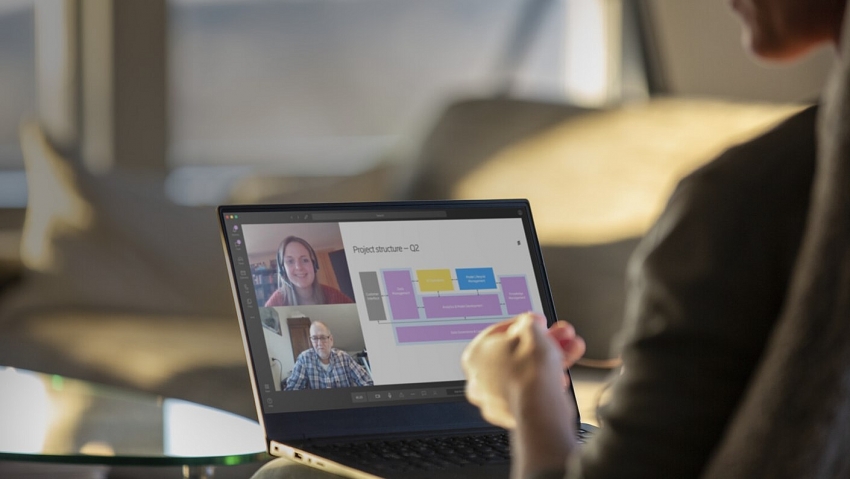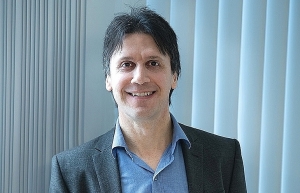COVID-19 impact shows networks’ crucial role in society: Ericsson Mobility Report
 |
| Meeting have been taken to the virtual space to help remote working during the COVID-19 social distancing |
The report also takes an incisive look at the role of networks and digital infrastructure in keeping societies running, and families connected during the COVID-19 pandemic.
Fredrik Jejdling, executive vice president and head of Networks, Ericsson, said, “The spread of COVID-19 has prompted people all over the world to change their daily lives and, in many cases, work or study from home. This has led to a rapid shift of network traffic from business to residential areas. The latest Ericsson Mobility Report shows that mobile and fixed networks are increasingly playing an even bigger part of critical national infrastructure.”
While 5G subscription growth in some markets has slowed as a result of the pandemic, this is outweighed by other markets where it is accelerating, prompting Ericsson to raise its year-end 2020 forecast for global 5G subscriptions.
”Beyond measuring the success of 5G in subscriptions, its impact ultimately will be judged by the benefits it brings to people and enterprises,” Jejdling adds. ”5G was made for innovation and this crisis has highlighted the true value of connectivity and the role it can play in restarting economies.”
Denis Brunetti, head of Ericsson Vietnam, Myanmar, Cambodia, and Laos stated, “In the initial phase of 5G introduction in Vietnam, we expect 5G to be used for managing the network capacity, speed, and quality in metropolitan areas with enhanced mobile broadband to address the huge traffic growth. Over time, new, exciting innovations in 5G for business will come with IoT use cases as 5G opens up opportunities for operators to digitalise industries, including healthcare, manufacturing, automotive, and energy/utilities.”
Value of digital infrastructure
Changes in behaviour due to lockdown restrictions have caused measurable changes in the usage of both fixed and mobile networks. The largest share of the traffic increase has been absorbed by fixed residential networks, which has experienced a 20-100 per cent growth. However, many service providers also noticed a spike in demand on their mobile network.
In a recent study conducted by Ericsson Consumer Lab, 83 per cent of the respondents from 11 countries claim that ICT helped them a lot to cope with the lockdown. The results show an increased adoption and usage of ICT services, such as e-learning and wellness apps, that have helped consumers adapt to new realities, underpinned by connectivity.
Looking ahead, while 57 per cent say they will save money for financial security, one-third plan to invest in 5G and an improved broadband at home to be better prepared for a potential second wave of COVID-19.
EMR Insights for Southeast Asia and Oceania: By 2025, 5G is predicted to be the second most popular cellular technology in the region, only behind LTE, surpassing 270 million subscriptions and accounting for around 20 per cent of all mobile subscriptions.
The data traffic per smartphone in Southeast Asia and Oceania is expected to reach 25GB by 2025 growing at a CAGR of 33 per cent. The total mobile data traffic in Southeast Asia is expected to reach 25 EB per month from 3.2 EB per month, growing at a CAGR of 40 per cent.
 Transforming factories of the future Transforming factories of the future |
 Broadband data upsurge tests resilience of networks globally Broadband data upsurge tests resilience of networks globally |
What the stars mean:
★ Poor ★ ★ Promising ★★★ Good ★★★★ Very good ★★★★★ Exceptional
Related Contents
Latest News
More News
- Businesses ramp up production as year-end orders surge (December 30, 2025 | 10:05)
- Vietjet chairwoman awarded Labour Hero title (December 29, 2025 | 13:06)
- How to unlock ESG value through green innovation (December 29, 2025 | 10:03)
- AI reshapes media and advertising industry (December 29, 2025 | 08:33)
- FPT and GELEX sign deal to develop blockchain tech for global markets (December 29, 2025 | 08:29)
- Vietnam’s GDP forecast to grow by 9 per cent in 2026 (December 29, 2025 | 08:29)
- Women entrepreneurs are key to Vietnam’s economic growth (December 29, 2025 | 08:00)
- Vietnam's top 500 value-creating enterprises announced (December 27, 2025 | 08:00)
- The PAN Group shaping a better future with ESG strategy (December 26, 2025 | 09:00)
- Masan Consumer officially lists on HSX, marking the next phase of value creation (December 25, 2025 | 13:20)

 Tag:
Tag:























 Mobile Version
Mobile Version